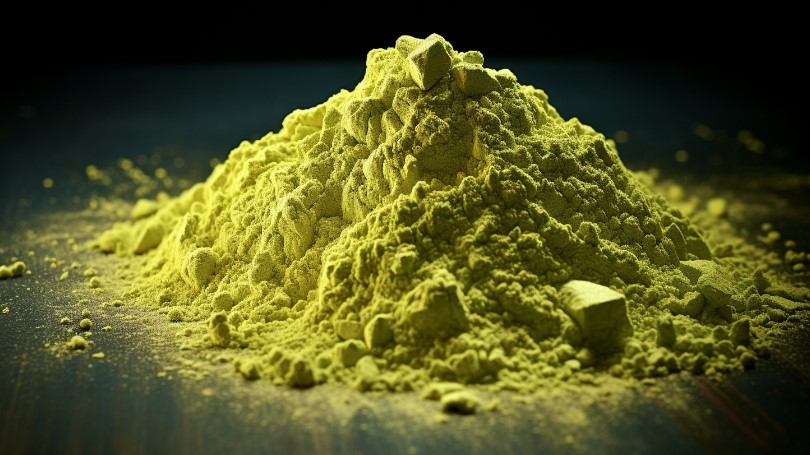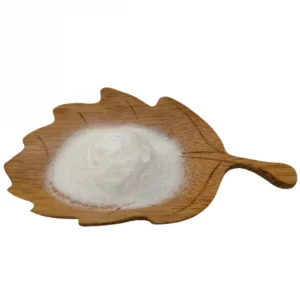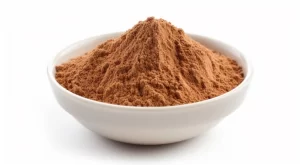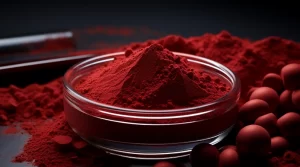Quercetin beyond your imagination

What is quercetin?
Quercetin is a bioflavonoid that is widely found in vegetables and fruits and has a variety of biological activities. Quercetin can strengthen the body’s enzyme antioxidant system, has antioxidant and free radical scavenging effects, and also has anti-oxidant properties. inflammatory, antiviral and immunomodulatory effects. Quercetin has strong antioxidant capacity and has a good preventive effect on diseases caused by oxidative stress.
Quercetin is a yellow crystal or powder solid with a hydroxyl group in the molecule. Its chemical structural formula is shown in the figure and it has a stable molecular structure. Quercetin molecules are almost insoluble in water, but slightly soluble in cold and hot ethanol, and completely soluble in dimethyl sulfoxide. In addition, quercetin also has good stability and antioxidant properties and is widely used in medicine, food and other fields [1].
When oxidative stress occurs in organisms, excessively produced reactive oxygen species can damage many biological molecules and cause endothelial dysfunction, which in turn affects the occurrence and development of various vascular diseases. Studies have shown that high levels of flavonoids in the diet can reduce the risk of various vascular diseases, among which quercetin, which is abundant and highly active, is believed to play a key role.
Quercetin’s strong antioxidant properties have important application prospects in the prevention and treatment of various disease models. Its antioxidant mechanism is generally closely related to its ability to scavenge free radicals and chelate metal ions. However, its new antioxidant mechanism needs to be further explored. Research[2].
What is quercetin derived from?
Quercetin is widely found in the stem bark, flowers, leaves, buds, seeds, and fruits of many plants, mostly in the form of glycosides, such as rutin, quercetin, hyperoside, etc. Quercetin can be obtained by acid hydrolysis Cortin. Among them, the content is higher in buckwheat stems and leaves, sea buckthorn, hawthorn, and onions. Quercetin is also found in many foods, such as onions, chives, asparagus, cabbage, mustard greens, green peppers, chicory, grapefruit, lettuce, hawthorn, apples, mangoes, plums, radishes, black currants, potatoes and spinach. . In addition, about 100 kinds of medicinal plants (such as Sophora japonica, Platycladus orientalis, galangal, coltsfoot, loranth, Panax notoginseng, ginkgo, elderberry, etc.) contain this ingredient.
Research on the quercetin content in tea, fruit juice and wine shows that the quercetin content in some drinks (such as beer, coffee, chocolate milk, white wine) is below 1 mg/L, while the quercetin content in red wine is 4~16 mg/L, grape juice 7~9 mg/L; among the fruit juices, except lemon juice (7 mg/L) and tomato juice (13 mg/L), which contain higher amounts of quercetin, other juices have higher contents. Low, generally below 5 mg/L; the highest content of quercetin in tea (10~25 mg/L). [3]
If you want to get quercetin through food, then onions, apples, red wine and green tea are good options. These foods contain high amounts of quercetin, which can help you stay healthy.
What are the extraction methods for quercetin, and what are the advantages and disadvantages of these methods. Can natural foods supplement quercetin? Are nutritional supplements better than whole foods?
Natural extraction and isolation
Since the content of quercetin in plants is only a few thousandths to a few thousandths, and its extraction and separation is difficult and costly, extracting quercetin directly from plants is not practical in production. However, when analyzing and identifying flavonoids or preparing pure samples for analysis, quercetin extraction and separation technology must be used [3].
acid hydrolysis
The rutin (rutin) of quercetin is widely distributed in nature and has high content. For example, the content in sophora rice is as high as more than 20%. Rutin is first extracted from Sophora japonica and then acid hydrolyzed to produce quercetin. This method is feasible for production. [3]
The main extraction methods of rutin include alkali extraction and acid precipitation, organic solvent extraction, and dipping. Among them, the alkali extraction and acid precipitation method is the most practical. Choose a 0.05% NaOH solution and boil it for 20 minutes, filter it while it is hot, and extract it 4 times with the same method to obtain an alkali aqueous solution of rutin. Add acid to precipitate it. After filtering, add acid to hydrolyze it to obtain water-insoluble quercetin. Filter , washed with water and dried to obtain quercetin solid. [3]
enzyme conversion method
Enzymatic hydrolysis of rutin is used to prepare a large amount of quercetin monomer, which is less abundant in plants. The operation is simple and safe. The whole process is economical and practical. The output is large and suitable for industrial production. The purity of the product is >90%, which can meet the needs of food and clinical applications. . Therefore, enzymatic conversion is undoubtedly a promising preparation method.
There are many methods for extracting quercetin, including chemical synthesis, plant extraction and microbial fermentation. The chemical synthesis method is simple to operate, but the product produced has low purity and has environmental pollution problems; the plant extraction method extracts quercetin from natural plants, which has the advantages of high efficiency, safety, and environmental protection, but requires a large amount of raw materials and professional equipment; microorganisms Fermentation methods can utilize microbial strains for production, which can not only increase yield and purity, but also reduce costs.
Although quercetin is a nutrient found naturally in foods, it is only beneficial when consumed in sufficient amounts. Some foods rich in quercetin include pomegranates, apples, raisins, etc. However, since everyone’s eating habits are different, it is difficult to ensure that you can consume enough quercetin every day. Therefore, in some cases, nutritional supplements may be better at meeting your body’s quercetin needs than whole foods.
In short, when choosing a quercetin supplement, various factors should be considered comprehensively, including personal dietary preferences, differences in physical conditions, and diversity of lifestyles. Therefore, aspects such as the quality, safety, and effectiveness of quercetin supplements also need to be considered to ensure their positive effects on physical health.
The efficacy of quercetin
Quercetin, also known as quercetin and quercetin, is a commonly used medicine. It has a variety of effects, including relieving cough and asthma, reducing swelling and diuresis, clearing heat and detoxifying, and improving immunity. It can relieve symptoms such as insomnia and forgetfulness, chest tightness and shortness of breath, palpitations, palpitation, dreaminess, memory loss, backache and limb weakness, dry mouth and bitter mouth, and chronic bronchitis. In addition, it can lower blood pressure, blood lipids and cholesterol, enhance capillary permeability, and reduce waste and toxins in capillaries. Therefore, it is also helpful in preventing and treating coronary heart disease, angina pectoris, myocardial ischemia and arrhythmia.
However, taking quercetin may cause kidney damage and side effects such as headache or tingling in the limbs. Therefore, you must follow your doctor’s advice when taking it. According to Japanese research, quercetin can lower blood pressure by releasing negatively charged chloride ions into cellular fluid. In addition, quercetin has anti-inflammatory and immune system supporting effects, and may be antiviral. It also blocks the effects of androgens on hormone-dependent human prostate cancer cells, thereby slowing or stopping the growth of prostate cancer cells.
In terms of anti-cancer, many studies have shown that quercetin has inhibitory effects on various cancer cells. In terms of specific mechanism of action, quercetin has a variety of biological effects, inhibiting various enzymes in cancer cells involved in cell proliferation and signal transduction pathways. Low-dose quercetin exerts a cancer cell-specific proliferation inhibitory effect, which is caused by cell cycle arrest in the G1 phase.
Quercetin is a very important anti-apoptotic and antioxidant that can effectively protect various organs from damage. In addition, quercetin also has various effects such as anti-cancer, anti-inflammatory, antibacterial, and antiviral. It can also lower blood sugar and blood pressure, regulate immune function, and also has a good protective effect on the cardiovascular system [2].
[1] Yao Jianwu. Study on the effect of quercetin on the metabolome of liver tumor cells HepG2 [D]. Graduate School of Chinese Academy of Sciences (Wuhan Institute of Physics and Mathematics), 2012
[2] Tian Rong. Research on the antioxidant mechanism of quercetin. 2021. Jiangxi Normal University, PhD dissertation.
[3] Zheng Jianxian. Development of plant active ingredients. Beijing: China Light Industry Press, 2005: 167-181
[4] Baidu Encyclopedia. Quote



